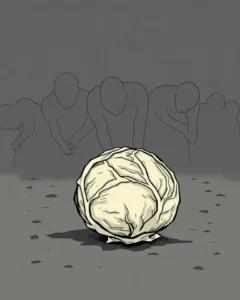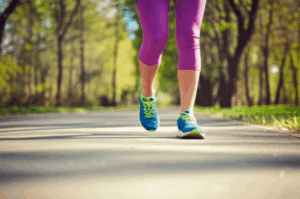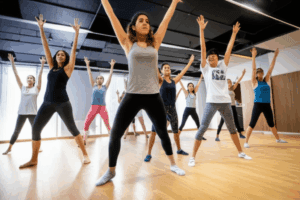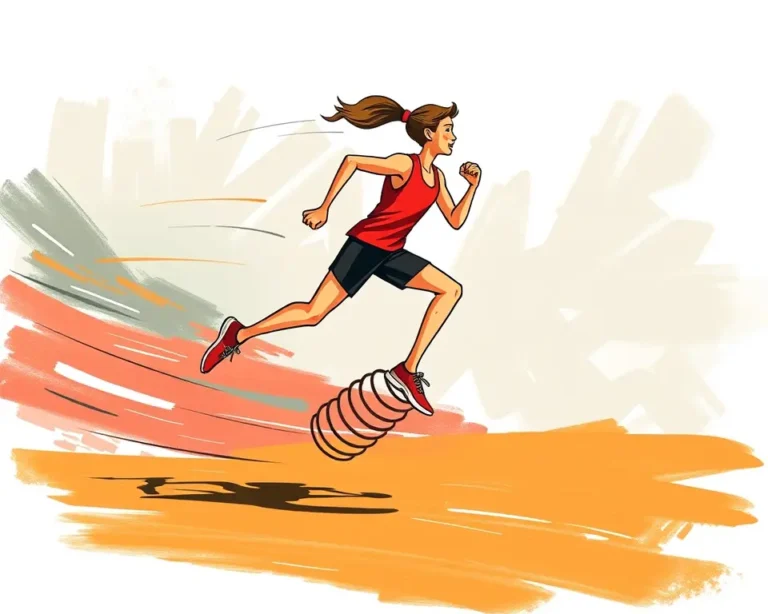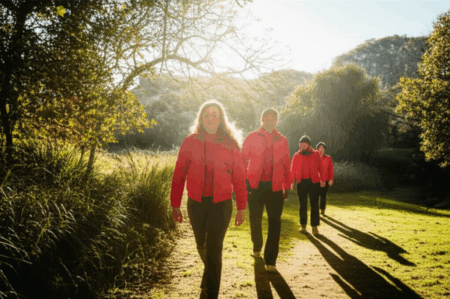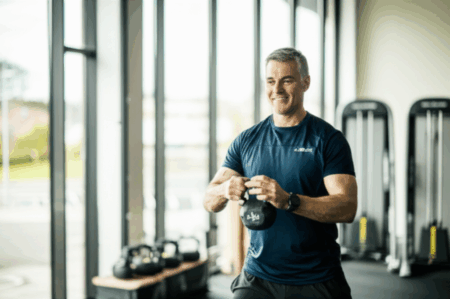Want to improve your running performance without spending hours on extra workouts? A recent study reveals a surprising secret: daily hopping. This simple plyometric exercise can boost your running economy, making you a more efficient and faster runner. This article dives into the science behind this technique and provides a simple 5-minute routine to incorporate into your daily life.
The Science of Hopping: How Plyometrics Improve Running
Running isn’t just about putting one foot in front of the other; it’s a series of jumps from one leg to the other. Plyometrics, exercises involving jumping, hopping, and bounding, can significantly enhance a runner’s power and efficiency.
What is Plyometrics?
Plyometrics focuses on explosive movements to increase muscle strength and power. These exercises utilize the “stretch-shortening cycle,” which involves rapid eccentric (muscle lengthening) and concentric (muscle shortening) contractions. This cycle improves the efficiency of muscle response, leading to more power with each stride.
Benefits of Hopping for Runners
- Improved Running Economy: Research shows that daily hopping can improve how efficiently your body uses oxygen while running, allowing you to run faster using the same amount of energy.
- Increased Power: Hopping builds power in your legs, enabling you to push off the ground more forcefully with each step.
- Reduced Injury Risk: Plyometrics, including hopping, can strengthen tendons and ligaments, making you less prone to common running injuries like shin splints and knee pain.
- Enhanced Neuromuscular Connection: Hopping improves the communication between your nerves and muscles, leading to more coordinated and efficient movements.
The Study That Changed the Game
A 2023 study published in Scientific Reports demonstrated the remarkable benefits of daily hopping for amateur runners. Participants who added a simple hopping routine to their training regimen experienced significant improvements in running economy after just six weeks. This routine involved hopping in place for as little as five minutes a day.
How Hopping Works
- Elastic Energy Storage: Hopping increases the elastic energy storage and release in your leg muscles, making your running stride more efficient.
- Decreased Tendon Stiffness: Researchers believe that hopping decreases tendon stiffness, which allows for more explosiveness when running at higher speeds.
- Fast-Twitch Muscle Fibers: Plyometrics help recruit fast-twitch muscle fibers, which are essential for speed and power.
The 5-Minute Daily Hopping Routine
Incorporating hopping into your daily routine is simple and requires no special equipment. Here’s a progressive six-week program based on the Scientific Reports study:
- Week 1: 5 sets of 10 seconds of hopping with 50 seconds of rest between sets (total hopping time: 50 seconds)
- Week 2: 6 sets of 10 seconds of hopping with 40 seconds of rest between sets (total hopping time: 60 seconds)
- Week 3: 8 sets of 10 seconds of hopping with 30 seconds of rest between sets (total hopping time: 80 seconds)
- Week 4: 10 sets of 10 seconds of hopping with 20 seconds of rest between sets (total hopping time: 100 seconds)
- Week 5: 15 sets of 10 seconds of hopping with 10 seconds of rest between sets (total hopping time: 150 seconds)
- Week 6: 15 sets of 10 seconds of hopping with 10 seconds of rest between sets (total hopping time: 150 seconds)
How to Perform the Basic Hop
- Starting Position: Stand with your feet hip-width apart.
- The Hop: Bend your knees slightly and push through the balls of your feet to jump straight up into the air.
- Landing: Land softly on the balls of your feet with bent knees.
- Repeat: Immediately jump back up into the air, minimizing the amount of time your feet spend on the ground.
Important Tips:
- Focus on keeping your feet on the ground for as short a time as possible.
- Work towards spending more uninterrupted time hopping.
- As you progress, try hopping on just one leg at a time.
Beyond the Basic Hop: Adding Variety to Your Routine
Once you’re comfortable with the basic hop, you can introduce other plyometric exercises to target different muscle groups and improve overall running performance. Here are a few options:
1. Jumping Lunge
- Starting Position: Stand with your feet together and hands on your hips.
- The Movement: Step your right foot forward and bend both knees into a lunge position. Push up through both feet and jump straight up, switching your legs mid-air. Land in a lunge position with your left foot forward.
- Repetitions: Complete four sets of 10 repetitions.
2. Skater Jump
- Starting Position: Stand with your feet together and arms at your sides.
- The Movement: Shift your weight onto your left foot and lift your right foot off the ground. Push off your left foot and jump two to three feet to the right, landing on your right foot. Immediately push off your right foot and jump to the left, landing on your left foot.
- Repetitions: Repeat, jumping side to side for 10 repetitions. Complete four sets.
3. Single-Leg Hops
- Starting Position: Balance on one leg with a slight bend in your knee.
- The Movement: Hop forward, landing softly on the same leg.
- Repetitions: Repeat for a designated distance or time before switching legs.
4. Two-Legged Forward Hops
- Starting Position: Stand with your feet hip-width apart.
- The Movement: Bend your knees slightly and jump forward, landing softly on both feet.
- Repetitions: Continue hopping forward for a designated distance or time.
5. Jump Squat
- Starting Position: Stand with your feet shoulder-width apart.
- The Movement: Lower your hips to knee-height or slightly lower, then push off the floor and jump as high as you can.
- Check: Keep your toes light, your heels heavy, and your knees and toes aligned and pointing forward.
6. Long Jump
- Starting Position: Stand in a squat stance with feet shoulder-width apart.
- The Movement: Push off the floor and jump as far forward as you can. Swing your arms to add length to the jump.
- Check: Try to land with your feet slightly in front of you.
7. Step-Up Knee Drive Jump
- Starting Position: Stand tall, closely behind a box or a step of a suitable height.
- The Movement: Step up onto the box with one foot, then drive the opposite knee up towards your chest as you jump off the box.
Integrating Plyometrics into Your Training Plan
- Start Slowly: If you’re new to plyometrics, begin with basic movements and gradually increase the intensity and volume.
- Warm-Up: Always warm up before performing plyometric exercises with light cardio and dynamic stretching.
- Proper Form: Focus on maintaining proper form to avoid injuries. If your form starts to break down, stop and rest.
- Rest and Recovery: Allow for adequate rest between sets and workouts. Aim for two days of recovery between plyometric sessions.
- Listen to Your Body: Pay attention to any pain or discomfort and adjust your training accordingly.
Other Ways to Improve Your Running
While hopping can significantly improve your running performance, it’s essential to consider other factors that contribute to overall fitness and efficiency.
1. Strength Training
Strength training is crucial for runners as it helps build muscle and improve power. Focus on exercises that target the muscles used in running, such as squats, lunges, and calf raises. Strength training alone doesn’t prepare and strengthen the tendons and ligaments specifically in the ways running demands. Plyometrics can bridge that gap.
2. Hill Running
Hill running is a great way to build strength and improve cardiovascular fitness. Incorporate hill workouts into your training plan to challenge your muscles and boost your endurance. Plyometric exercises can also help with hill running by increasing power in legs.
3. Proper Nutrition and Hydration
Eating a balanced diet and staying hydrated are essential for optimal running performance. Make sure you’re consuming enough carbohydrates, protein, and healthy fats to fuel your workouts and support recovery.
4. Rest and Recovery
Adequate rest and recovery are just as important as training. Aim for 7-9 hours of sleep per night and allow your body time to recover between runs.
The Takeaway
Adding a simple, 5-minute hopping routine to your daily life can significantly improve your running economy, power, and efficiency. This low-impact exercise, backed by scientific research, is a game-changer for runners of all levels. Start with the basic routine and gradually progress to more advanced plyometric exercises to unlock your full running potential. So, hop to it and experience the difference!

